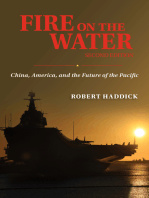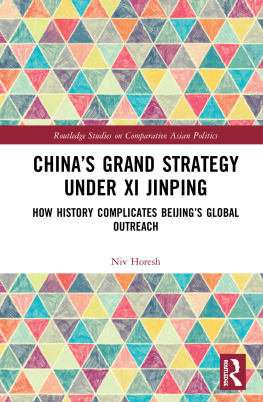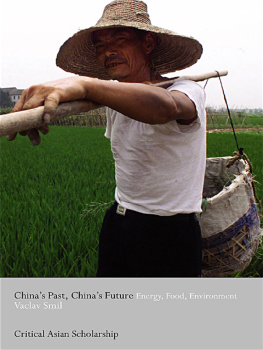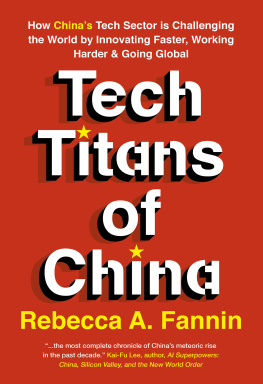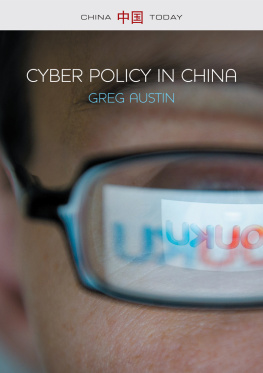Dan Blumenthal is a resident fellow and the director of Asian studies at the American Enterprise Institute, where he focuses on East Asian security issues and Sino-American relations. Blumenthal served in and advised the US government on China issues for more than a decade. From 2002 to 2004, he served as senior director for China, Hong Kong, Mongolia, and Taiwan at the Department of Defense. Additionally, he served as a commissioner on the congressionally mandated US-China Economic and Security Review Commission from 2006 to 2012 and held the position of vice chairman in 2007. He has also served as a distinguished visiting professor at the Naval War College. Blumenthal has authored hundreds of articles, book chapters, and essays and is the coauthor of An Awkward Embrace: The United States and China in the 21st Century (AEI Press, November 2012).
I have been researching, thinking about, and writing this book for longer than I care to admit. During this period, I have accumulated a long list of debts to people and institutions that helped make this book possible.
The first is the American Enterprise Institute, which has provided me with an intellectual home since 2004. I have worked under three supportive presidents, Chris DeMuth, Arthur Brooks, and Robert Doar, and two supervisors, Dany Pletka and Kori Schake. Dany provided me with much support and encouragement throughout many years of research. Kori gave me a long leash to finish this project. I have also had too many intellectual mentors at AEI to name here.
AEI is unique in both the generosity and intellectual curiosity of its supporters. Over the years, my thinking has evolved in long discussions with John Hurley. I traveled to Asia with Tully Friedman and Harlan Crow, where we learned that Chinas leaders were not quite as confident as they projected. I have talked at length with countless other supporters at AEIs many events that are as essential to the scholars as they are to the rest of AEIs community.
I have been well served in writing this book by very capable research assistants, many of whom have gone on (or will go on) to make great contributions to US-Asia policy: Lara Crouch, Eddie Linczer, Olivia Schieber, Annie Kowalewski, and Linda Zhang. A small army of interns has been invaluable as well. Ian Easton was an early and skillful reader and editor of the manuscript.
The Smith Richardson Foundation, through the leadership of Marin Strmecki and Allan Song, has been generous and patient with its support.
I owe a special debt to Roger Hertog for his mentorship and support. He provided me the opportunity to teach a class on Chinas grand strategy, which refined my thinking and vastly improved my writing. He taught me that to teach is to learn.
Finally, I owe a debt of gratitude to my family. I thank my wife, Jen, for her tenacious support of all my endeavors even as she has prospered in her own career. My children, Jonah, Ari, and Maiya, were very, very young when I started. The book is dedicated to them. It is my generations job to get China right so their generation can continue to live in freedom and pursue their dreams as we confront the China nightmare.
W hat is the China nightmare? It is the combination of Beijings strengthits aggressive behavior and grand ambitions as it tries to position itself at the center of geopoliticsand its weaknesses. Chinas response to COVID-19 has cast a glaring light on both. Thanks to the Chinese Communist Party (CCP), the nations domestic disorders and ills, caused by internal economic and social weaknesses and decaying political institutions, have now been exported to the world.
This book argues that precisely because of the mix of internal weakness and greater external strength, China poses serious problems for the US. It is still a far richer, more dynamic, and more powerful rival than was the Soviet Union. And Beijing will continue to try and gain military, diplomatic, and propaganda advantages over the United States in a competition for global leadership and geopolitical primacy. As we have seen during the COVID-19 pandemic, it will continue to press its global agenda even while suffering through a crisis.
China is making a bid to reshape the world order more to its liking. It is attempting to gain advantages in technologies that can give it a military andit hopeseconomic edge. Its diplomatic, economic, and propaganda campaigns are serious and often effective. China is powerful and successful.
But it is also far weaker than it looks. It will undergo political tumult and social problems, including a backlash against its heavy-handed authoritarian rule, from Hong Kong to the inner heartland of China. And, as COVID-19 has demonstrated, Chinas system of governance causes massive problems for the world. Its mishandling of the COVID-19 epidemic through political malignancy and incompetence has caused a global plague.
Thanks largely to the CCPs political maladies, the COVID-19 pandemic is the single-greatest global peacetime catastrophe since World War II. Barely months into what promises to be a multiyear disaster, the pandemic has already cost America alone more than 100,000 lives, tens of millions of jobs, and trillions of dollars in lost output, income, and wealth. The ultimate toll for the world as a whole from this pandemicboth the direct and indirect consequencesmay still lie beyond imagining.
Beijing now exports its political pathologies with grave consequences for the rest of the world. The CCP rules by fear. Its continued existence depends on censoring the truth and punishing those who attempt to tell it. Although China was ruled by a dictatorship before Xi Jinping ascended to power, he has made a radical bid to obtain almost total power and authority over his countrys affairs. In doing so, he paralyzed the states bureaucracy and, in the case of COVID-19, created perverse incentives for public officials chartered to deal with public health problems.
The Peoples Republic of China (PRC) has long touted the Beijing model as an alternative to what Western governments had to offer developing nations. This model was supposed to be a more efficient alternative to democracies, which were supposedly sclerotic and incompetent. Instead, the real Beijing model was on full display during the pandemic: an overcentralized dictatorship bolstered by political repression and social control that creates powerful incentives for local officials to lie, cover up, and punish those who can help most in a crisis. The Beijing model has now inflicted untold misery on its own people and the rest of the world.
A Grim Series of Mishaps
As of this writing, an initial timeline of Chinas approach to COVID-19 has become more clear. Still, we are sure to learn more as countries begin to investigate Chinas role in the virus spread.
We know the virus originated in Wuhan, the capital of Hubei province. Wuhan has a population of 11 million people and is a major domestic transportation hub. Wuhan officials were reluctant to take decisive action without Beijings blessing and tried to cover up a growing public health crisis. And Beijing was slow to react: Millions of people left Wuhan for the rest of China and the world without receiving a COVID-19 test.
The first acknowledged case of the novel coronavirus was recorded in a Wuhan hospital on December 1, 2019, and Wuhan doctors recorded the first suspected case of human-to-human transmission of the virus on December 6. However, some cases had no contact with the market.
The US government released US State Department official warnings from 2018 about safety at the Wuhan Institute of Virology (WIV), Chinas first BSL-4 lab (the highest biosafety level, granted to labs working with highly dangerous viruses). The fact that the WIV worked with infectious viruses, including those found in bat coronaviruses, has raised suspicions as to whether the virus leaked out of the lab.


